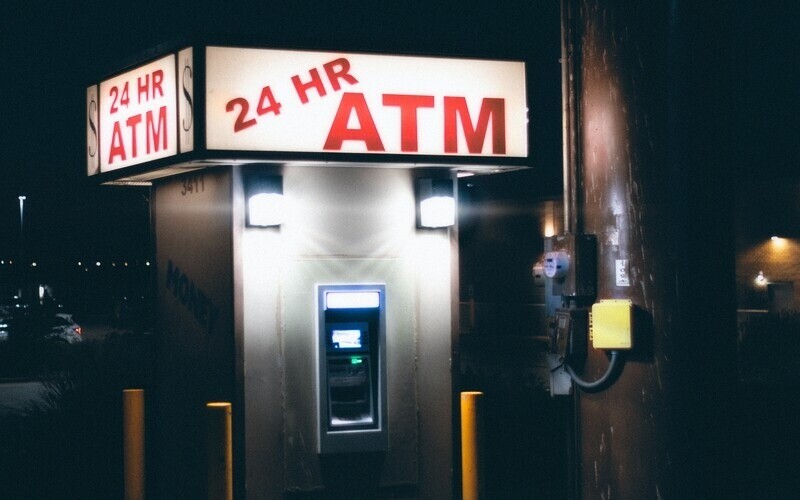Paying extra cash on your home loan can save you tens of thousands of dollars in interest over the term of your loan.
But what if you need that cash, perhaps for an emergency or for another significant expense like a wedding or a holiday?
That’s when redraw facilities can be useful. However, they’re not without drawbacks, so read on to learn what redraw facilities are and whether they are right for you.
What is a redraw facility?
A redraw facility allows borrowers to make extra repayments on their home loan and withdraw them at a later date if the money is needed for another purpose. The extra repayments accumulated in the redraw facility are separate from your regular monthly mortgage repayments, which is how they’re available for withdrawal.
The best part is that any extra payments you make on top of the minimum will reduce the amount of interest you pay on your home loan. This is because the interest calculated will be on the amount you owe on your loan minus the amount you have available for redraw.
At the same time, you have the security of knowing you can access these extra funds should you need them.
Let’s consider an example. If your mortgage repayments were $4,000 a month and you made an extra $1,000 in payments for 12 months, you would have $12,000 in your redraw facility available for withdrawal.
Keep in mind, you can only withdraw the extra repayments you’ve made on your loan and none of your regular monthly repayments.
By making extra repayments, you can also significantly reduce the term of your loan.
It sounds like a win-win but arguably one of the most important points to consider with redraw facilities is the money may not always be so easy to access.
Some lenders will set out stipulations on how much or little you can deposit, withdraw, or hold in your redraw account, and how many times you can contribute or take from it.
Many lenders offer redraw facilities free of charge as an added feature of your home loan, but some will charge for the privilege. Some will also charge when you want to make a withdrawal, or if you exceed a certain number or amount in withdrawals.
You’ll most often find redraw facilities attached to variable-rate loans, but it’s also possible to have one attached to a fixed-rate loan, depending on the lender.
Redraw facility case study
Let’s consider how a redraw facility works. Ms Rhee has a 30-year mortgage with monthly repayments of $3,000. She’s been contributing an extra $100 each month to her redraw facility since she took out the loan 10 years ago.
Ms Rhee then meets Mr Droar and they fall madly in love, and he proposes. Mr Droar doesn’t have much money and plans to take out a high-interest personal loan to fund the wedding.
Ms Rhee loves him regardless and offers to pay for the wedding, using the funds in her redraw facility rather than beginning their wedded life in debt.
Her lender allows her to withdraw the $12,000 she has accumulated in the facility, which is used to pay for the ceremony. The two are married as Mr and Mrs Rhee-Droar.
Tips on how to use a redraw facility
A redraw facility can be a great way to save money on your home loan and help you out in a pinch. Making extra repayments, however small, can reduce the term of your loan and potentially save you thousands in interest costs. It also grants you the peace of mind of a safety net in the event you need funds for an emergency like medical bills or vehicle repairs, for example.
One of the most effective ways to maximise the benefit of a redraw facility is if the interest rate on your home loan drops. If your interest rate drops, so too will your repayments. If you have a redraw facility, you could keep your monthly repayments at the level they were previously. This allows you to pay off your loan faster while also giving you access to the funds should you need them.
It’s worth remembering making extra repayments doesn’t have to be a regular thing. You can make them as frequently, or infrequently as you like, dependent on your lender's conditions of course.
If you come into a large sum of money, like a tax return or bonus, for example, you could feasibly put it in your redraw facility to pay down your loan faster. Just make sure the savings you’re making from using the facility aren’t outweighed by any fees the lender might charge you.
Check out our calculator to see how much making extra repayments could save you in the long term.
See also: How to pay off your mortgage quickly
How to access money in a redraw facility
Money in a redraw facility is often less accessible compared to a savings account or an offset account. You might not be able to access the funds on the day you want them, and you could have a maximum number of withdrawals over a given period of time. How you access the funds will come down to your lender, but some of the most common ways include:
-
Via the lender's app
-
Transferring to a transaction account
-
An ATM
-
Online
-
Over the phone
-
At a branch
Advantages of a redraw facility
There are a number of advantages that come with using a redraw facility, including:
-
Interest savings: Making extra repayments into your home loan redraw facility can reduce the length of your loan. This in turn will cut down the amount of interest paid over the loan term, potentially saving you tens of thousands of dollars.
-
Emergency cash: Out-of-the-blue expenses always seem to pop up at the worst time, whether it's a broken-down car or a broken leg. A redraw facility can act as a safety net in these situations, with the cash in the facility available for withdrawal to cover any emergency expenses.
-
Unlimited redraw: Under some promotional offers, many lenders will let you withdraw as little or much out of your redraw facility as many times as you want.
-
Tax benefits: Redraw facility balances don’t earn interest and as a result aren’t taxed by the government.
-
Accessibility: There is usually a roadblock or two in readily accessing funds kept in a redraw facility. While this can be a drawback for some, for others who may be more impulsive spenders, it can be a useful gatekeeper in preserving the balance of any extra payments.
- Often comes free with home loan: Many lenders include a redraw facility at no extra cost when taking out a home loan with them. Always be sure to check. While you're considering lenders, the table below offers some of the most competitive interest rates on the market.
| Lender | Home Loan | Interest Rate | Comparison Rate* | Monthly Repayment | Repayment type | Rate Type | Offset | Redraw | Ongoing Fees | Upfront Fees | Max LVR | Lump Sum Repayment | Extra Repayments | Split Loan Option | Tags | Features | Link | Compare | Promoted Product | Disclosure |
|---|---|---|---|---|---|---|---|---|---|---|---|---|---|---|---|---|---|---|---|---|
5.54% p.a. | 5.58% p.a. | $2,852 | Principal & Interest | Variable | $0 | $530 | 90% |
| Promoted | Disclosure | ||||||||||
5.49% p.a. | 5.40% p.a. | $2,836 | Principal & Interest | Variable | $0 | $0 | 80% |
| Promoted | Disclosure | ||||||||||
5.64% p.a. | 5.89% p.a. | $2,883 | Principal & Interest | Variable | $250 | $250 | 60% |
| Promoted | Disclosure | ||||||||||
5.64% p.a. | 5.89% p.a. | $2,883 | Principal & Interest | Variable | $248 | $350 | 60% |
| Disclosure |
Disadvantages of a redraw facility
Redraw facilities can have a number of drawbacks, including:
-
Withdrawal fee: Some lenders will charge you for each withdrawal you make, while others will charge you after you make a certain number of withdrawals in a year.
-
Accessibility: Redraw facilities typically don’t have same-day withdrawal, which can be less than ideal if you need the money immediately.
-
Min/max withdrawal: Some lenders will set a minimum or maximum withdrawal amount.
-
Funds aren’t technically yours: The money in a redraw facility isn’t yours; it's the lender's. This means your lender could feasibly deny you access to it, change the balance of your redraw amount, or alter any number of conditions associated with the loan. Such a scenario affected some ME Bank customers in 2020. The bank was within its rights to make changes to its conditions but agreed to review the cases of some borrowers after a backlash.
-
Gone when the loan finishes: You may think you have money in your redraw facility available for withdrawal when you need it, even after you’ve finished paying off your loan. But this amount ultimately counts towards your loan balance, so if you’ve got $20,000 to go on your loan and a handy $20,000 sitting in your redraw facility, it will go to paying your home loan without you having a choice.
Is a redraw facility better than an offset account?
An offset account is essentially a transaction account linked to your home loan. The balance in it is offset against your home loan balance, saving you on interest paid over the life of the loan. For example, if you had $50,000 in your offset account and a $600,000 loan, you would only be charged interest on $550,000 of the loan.
Offset accounts and redraw facilities are usually exclusive, with borrowers typically only being able to take advantage of one or the other. Generally, neither redraw nor offset accounts earn interest, rather both are there to save you interest on your home loan.
A redraw facility often works for people who want to save interest costs on their loan but like the security of having extra cash there should they need it, while an offset account can be good for people wanting complete flexibility, as their funds are much more accessible. An offset account is essentially a bonafide bank account that lets borrowers deposit into and withdraw as they wish without the lender having too many controls over their activity.
As such, an offset account has much more separation from the home loan account than a redraw facility has. A redraw facility is part of the loan.
The trade-off here is that home loans with offset accounts may come with a slightly interest rate or fees. Whether one is better than the other is entirely up to the borrower and their own financial goals.
A mortgage broker can help you understand which facility might suit you better. Otherwise, speak directly to your lender. Lenders generally offer a range of products covering both options, but make sure you read the terms and conditions of each before deciding as these can differ considerably between lenders.
Photo by Jose Reyes on Unsplash

Ready, Set, Buy!
Learn everything you need to know about buying property – from choosing the right property and home loan, to the purchasing process, tips to save money and more!
With bonus Q&A sheet and Crossword!







 Harry O'Sullivan
Harry O'Sullivan
 Bea Garcia
Bea Garcia
 Denise Raward
Denise Raward
 Jacob Cocciolone
Jacob Cocciolone
 Hanan Dervisevic
Hanan Dervisevic

